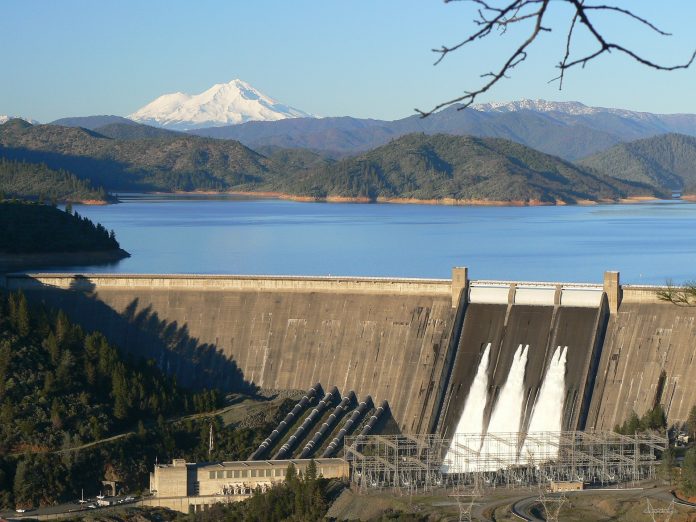By Madison Hirneisen
California Gov. Gavin Newsom, Oregon Gov. Kate Brown and Secretary of the Interior Deb Haaland met alongside tribal leaders Thursday to celebrate the largest dam removal in U.S. history, which is set to begin next year.
The project involves the removal of four dams along the Klamath River, which flows from Oregon to Northern California and into the Pacific Ocean. The project represents the culmination of more than two-decades of advocacy by the Yurok, Karuk and Hoopa Valley tribes, who have fought for dam removal in an effort to restore diminished populations of salmon and additional endangered fish species.
The $450 million dam removal, which was officially approved by federal regulators in November, is scheduled to begin in 2023 and be completed in 2024. Once finished, officials say over 400 miles of the Klamath River will flow freely again for the first time in over a century, opening up a huge stretch of salmon habitat and improving water quality.
“We are making possible the most significant dam removal and river restoration restoration project in our nation’s history,” Brown said Thursday. “It has taken nearly my entire tenure as governor but finally, finally, we can say with certainty that these dams are coming down, and it’s about damn time.”
The Klamath River Basin has faced difficult times in recent years due to the ongoing drought in the West. This year marked the third year in a row that severe drought impacted farmers, fish and tribes, resulting in strict water restrictions that limited farmers and ranchers to accessing just one-seventh of the amount of water from the river they could get in a wetter year, according to the Associated Press.
Opponents of the dam removal project previously expressed concern that farmers would have to give up irrigation water to wash away sediment stored behind the dams, while others raised concern about lower property tax values and property tax losses to residents in Siskiyou County, as reported by Oregon Public Broadcasting.
Water has been a source of contention in the Klamath River Basin for decades. Klamath Tribes hold senior water rights, and they prioritize reserving enough water to protect endangered fish, while farmers need water to irrigate their crops, as reported by High Country News. The trouble is, the lack of supply makes it hard to find enough water to go around.
In 2001, thousands gathered to form a mile-long bucket brigade to protest the federal government’s decision to cut off irrigation water for farmland in the Klamath Basin.
Afterwards, the Bush administration ultimately decided to send more water to farmers. Months later, tens of thousands of chinook salmon died in the Klamath River, provoking anger from tribes, fisherman and environmental groups.
Haaland, the first Native American cabinet secretary in history, underscored the importance of fish to tribal communities during brief remarks Thursday, emphasizing that the “role of fish to tribal communities has been central, and we must do all we can to protect and honor that relationship.”
“For as long as the indigenous peoples of this area have stewarded this land, the fish in the river have held a prominent sacred place within their lives,” Haaland said. “We are committed to protecting this special place for decades to come so that future generations will know the same abundance and beauty of the Klamath River Basin, as all of your ancestors did.”
Several officials acknowledged Thursday that years of work to restore habitat remains after the dams are officially removed in 2024. Newsom told reporters Thursday that California is “here for the long haul.” Haaland announced $5.8 million in new federal funding on Thursday to help restore aquatic ecosystems.
Madison Hirneisen is a staff reporter covering California for The Center Square. Madison has experience covering both local and national news. She currently resides in Southern California.
To read more about water conservation, click here.
To read more about protecting endangered species, click here.


























